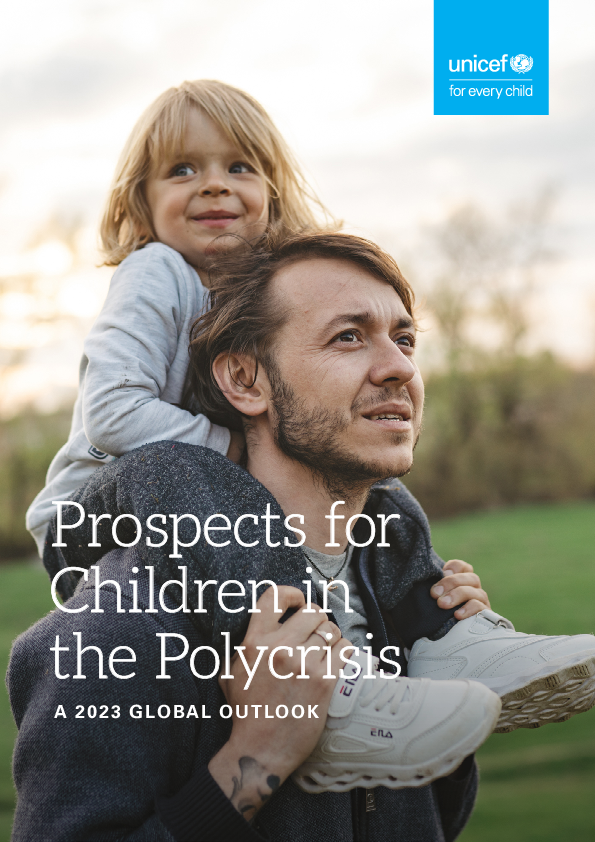 Read this article in French
Read this article in French- Share this article
- Subscribe to our newsletter
Prospects for children in the polycrisis
While future risks and crises may be unavoidable, reducing children’s vulnerability to them is achievable. This is the message of the report Prospects for Children in the Polycrisis: A 2023 Global Outlook, published by the United Nations Children’s Fund (UNICEF) in January 2023.
The report describes the current global “polycrisis” – multiple, simultaneous shocks with strong interdependencies, intensified in an increasingly integrated world – along with eight trends that will shape child rights and well-being in the coming year.
The trends explored are:
- The pandemic’s harms will continue to be counted – but reforms of health architecture and medical breakthroughs offer hope for children.
- Efforts to tame inflation will have unintended negative effects on child poverty and well-being – requiring policy measures that protect investments for vulnerable families and children.
- Multiple factors will contribute to continued food and nutrition insecurity – with increasing calls for greater climate adaptation and food systems reform to prevent food poverty in children.
- The worsening energy crisis may cause immediate harm to children – but the focus on energy sustainability provides hope for a greener future.
- Unmet needs and underinvestment in children warrant reforms of financial flows to developing countries – while renewed attention on climate finance and debt relief holds promise.
- Threats to democratic rights such as freedom of expression are expected to continue – but social movements, including those led by young people and women, are likely to push back.
- Increasing factionalism will put further stress on multilateralism – but efforts to address children’s and young people’s concerns may offer opportunities to find common ground.
- The internet will continue to fragment and become less global, resulting in further disparities for children – prompting a greater push for openness, fairness and inclusion.
There are tried-and-tested strategies that can be adopted to mitigate these negative impacts, according to the report. In addition to providing immediate humanitarian relief, governments can support those most at risk by, for instance, expanding health, social protection and education services, providing cash benefits to families with children to supplement family income, and increasing the provision of food subsidies.
The authors underline that the trends identified in the report are highly interlinked, and that global events, shocks and trends will likely interact with each other in ways that could significantly alter global prospects for children. “None of the trends we write about should be viewed in isolation from each other, nor will their impact be felt within only one dimension of child well-being,” they write.
(UNICEF/ile)





Add a comment
Be the First to Comment